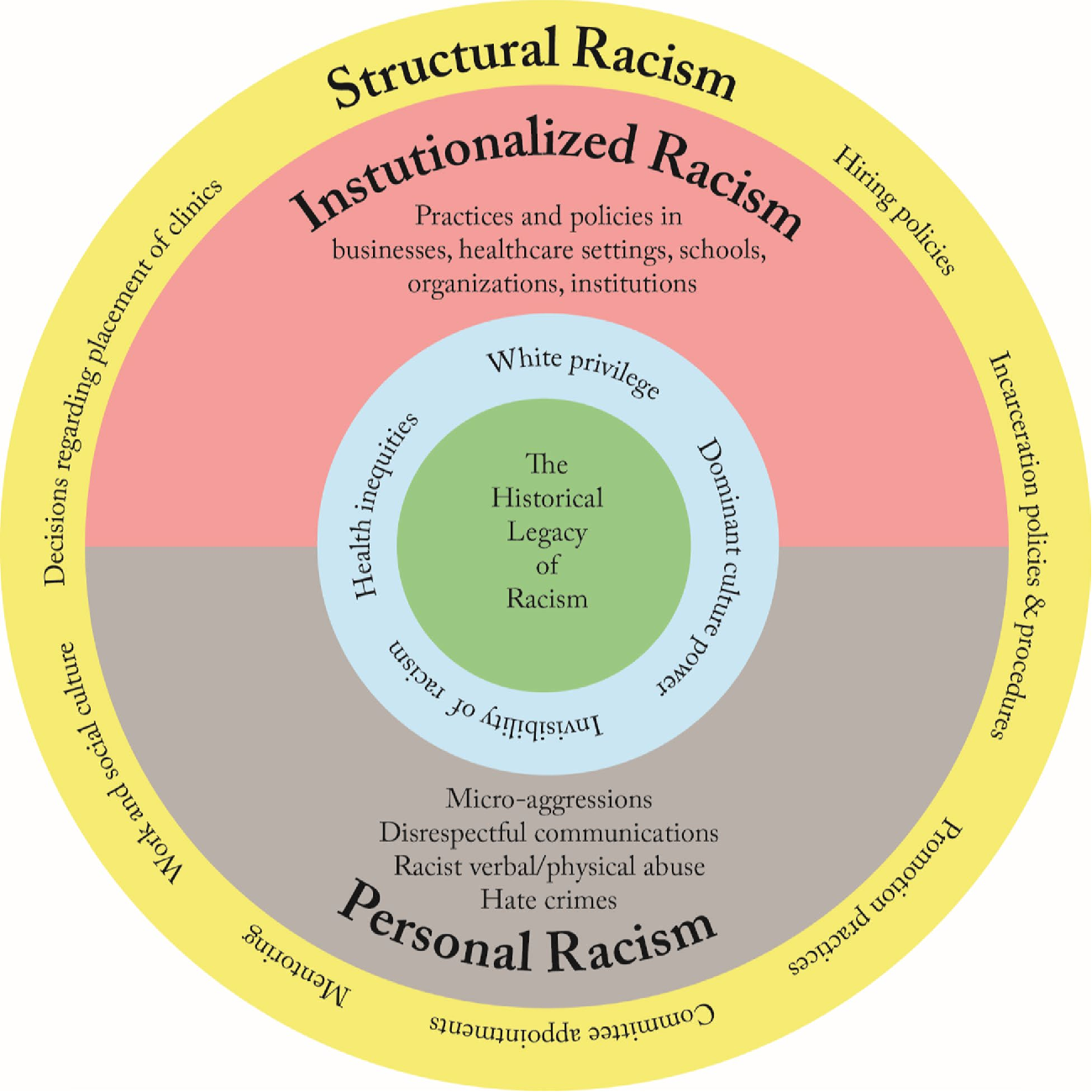Diversity, Equity, Inclusivity & Accessibility (DEIA)
Department of Epidemiology
Education
The Centrality of DEIA in Epidemiology and Public Health
Diversity of thoughts and opinions is the foundation of scientific innovation and rigor in research which, in turn, promotes health for all. If diversity of thoughts and opinions serves as fodder for innovation and if such diversity stems from diverse lived experiences, then such diversity needs to be intentionally incorporated into research and education in an equitable, inclusive, and accessible manner.
Health equity is a key component of public health education and practice. As epidemiology researchers, educators, mentors, and trainees, we have an opportunity and responsibility to study how systemic disparities cause avoidable and preventable inequities in health outcomes, and to center health equity as a framework to guide our work within and outside of the classroom.
Key Concepts
Diversity, equity, inclusion and accessibility: In our Department, we value diversity and strive to be inclusive and supportive of individuals of all ages, religions, veteran statuses, races, ethnicities, biological sex assigned at birth, sexual orientations, genders, socioeconomic statuses, and disabilities (physical, mental, social, developmental, or emotional). Equity ensures that the needs of all individuals are met, enabling all people to achieve the same level of success as their colleagues and classmates. Inclusion involves implementing ways to increase a sense of belonging for everyone in the Department, with a focus on those who are not in the majority or advantaged groups. Accessibility is ensuring that all people in our Department have equitable access to opportunity and education.
Microaggressions: Brief and subtle verbal and/or non-verbal denigrating messages directed towards individuals or communities from underrepresented populations that carry the weight of the offending party’s implicit bias, often below their own conscious awareness.
Health disparities and health equities: These definitions have evolved over time, but generally, differences in health among population groups are called health disparities. Health disparities that are deemed unfair or stemming from injustice (such economic, social, or environmental disadvantage) are called health inequities.
Systemic racism, structural racism, and institutional racism: Systemic and structural racism are forms of racism that are pervasively and deeply embedded in and throughout systems, laws, written or unwritten policies, entrenched practices, and established beliefs and attitudes that produce, condone, and perpetuate widespread unfair treatment of people of color. They reflect both ongoing and historical injustices. Although systemic racism and structural racism are often used interchangeably, they have somewhat different emphases.
Systemic racism emphasizes the involvement of whole systems, and often all systems—for example, political, legal, economic, health care, school, and criminal justice systems—including the structures that uphold the systems.
Structural racism emphasizes the role of the structures (laws, policies, institutional practices, and entrenched norms) that are the systems’ scaffolding. Because systemic racism includes structural racism, for brevity we often use systemic racism to refer to both; at times we use both for emphasis.
Institutional racism is sometimes used as a synonym for systemic or structural racism, as it captures the involvement of institutional systems and structures in race-based discrimination and oppression; it may also refer specifically to racism within a particular institution.

Cultural competence and cultural humility: Cultural competence is the ability to understand, communicate with, and effectively interact with people across cultures. Cultural humility goes beyond the concept of cultural competence to include a personal lifelong commitment to self-evaluation and self-critique, recognition of power dynamics and imbalances, a desire to fix those power imbalances and to develop partnerships with people and groups who advocate for others, and institutional accountability.
Assess Your Understanding of DEIA
The first step to researching and advancing health equity is educating yourself. How well do you understand these topics? Take our quiz to find out.
Epidemiology Health Equity Council
Who We Are
The CSPH Epidemiology Health Equity Council (HEC) is a committee focused on improving initiatives related to DEIA within our Department. We are made up of faculty, staff, and students within the Department of Epidemiology. Current members are Wei Perng, Associate Professor; Rebecca Conway, Associate Professor; Molly Lamb, Clinical Teaching Associate Professor; Kendra Young, Research Assistant Professor; Brianna Moore, Assistant Professor; Dorah Labatte, DrPH Student Representative; Celeste Connell, Staff Representative; Blair Weikel, PhD Student Representative; Johnna Bakalar, PhD Student Representative; and Alyssa Beck, PhD Student Representative.
If you are interested in collaborating with or joining the HEC, please email council chair Dr. Wei Perng.
Mission & Vision
The mission of the Epidemiology Health Equity Council (HEC) is to ensure diversity, equity, inclusivity, and accessibility within the Department of Epidemiology and the Colorado School of Public Health. We aim to identify and promote opportunities in public health research and practice for all people. Our vision is founded in the pursuit of an empathetic and inclusive academic environment that supports accessible education and impactful research, regardless of social identity and prior experiences, within the shared goal of optimizing population health.
HEC Newsletter Archives
Resources
- CSPH Land Acknowledgment
- CSPH Labor Acknowledgment (coming soon)
- CSPH Community Agreements
- JAMA Inclusive Language for Reporting Demographic and Clinical Characteristics*
- *This is one of many guides; many journals have their own requirements. These language nuances are changing and evolving.
- Utilization and conceptualization practices for race and ethnicity in epidemiologic research
- Rethinking Race and Ethnicity in Biomedical Research
- Declaration of Helsinki - revised to modernize research ethics standards
Fall 2024 Research Spotlights
Social determinants of dry eye in the United States: A systematic review

Lead author: Epidemiology PhD student Daniel Shaughnessy
Faculty co-authors: Alison Su-Hsun Liu, Alison Abraham, Riaz Qureshi, and Tianjing Li
The investigators found that most social determinants of health (SDOH) indicators studied were associated with unfavorable dry eye measures (e.g., higher disease burden, worse symptoms, delayed referral) in the US. Such results highlight a need for future investigations into SDOH of dry eye to standardized instruments and address SDOH domains for which there is an evidence gap, such as health care, educational access, and economic stability.
Identifying structural risk factors for overdose following incarceration: a concept mapping study
Lead author: Former Epidemiology MPH student Samantha Nall
Faculty co-author: Kate LeMasters
The concept mapping process resulted in five clusters: Community-Based Prevention, Drug Use and Incarceration, Resources for Treatment for Substance Use, Carceral Factors, and Stigma and Structural Barriers. These concepts capture important aspects of overdose risk among formerly incarcerated persons that may otherwise be overlooked and can be used to inform resource allocation and decision making related to prevention of substance abuse in this vulnerable population.
Child age at time of first maternal concern and time to services among children with autism spectrum disorder

Lead author: Former Epidemiology MS student Julia Van Dyke
Faculty co-authors: Tessa Crume, Kristina Hightshoe, and Carolyn DiGuiseppi
In this study, parity, gestational age, and child health and behavior were associated with child age at first maternal concern regarding autism spectrum disorder (ASD). Knowledge of early ASD correlates may enable the child’s mother or other caretakers to recognize concerns in a timely fashion and benefit from enhanced education about the child’s development.
Grant Announcement

Epidemiology faculty Kate Lemasters received funds from the Colorado Clinical and Translational Sciences Institute (CCTSI) Community-Engaged Pilot and the General Internal Medicine (GIM) Small Grant program to better understand needs for mental health and substance use prevention/support among persons involved in the local criminal legal system (e.g., jail, probation). These projects involve organizing a Community Advisory Board (CAB) for which Photovoice technology will be used to gather participant-taken photographs and narratives to translate lived experiences into actionable knowledge (CCTSI Pilot), and conducting one-on-one interviews with individuals in jail and on probation (GIM Small Grant). Both projects will feature a community member with lived experience in incarceration and substance use as a lead investigator. The public health impact of these joint efforts lie in an improved understanding of firsthand experiences and perceptions of the criminal legal system which, in turn, will inform interventions for improving behavioral health for incarcerated individuals and those on probation.



